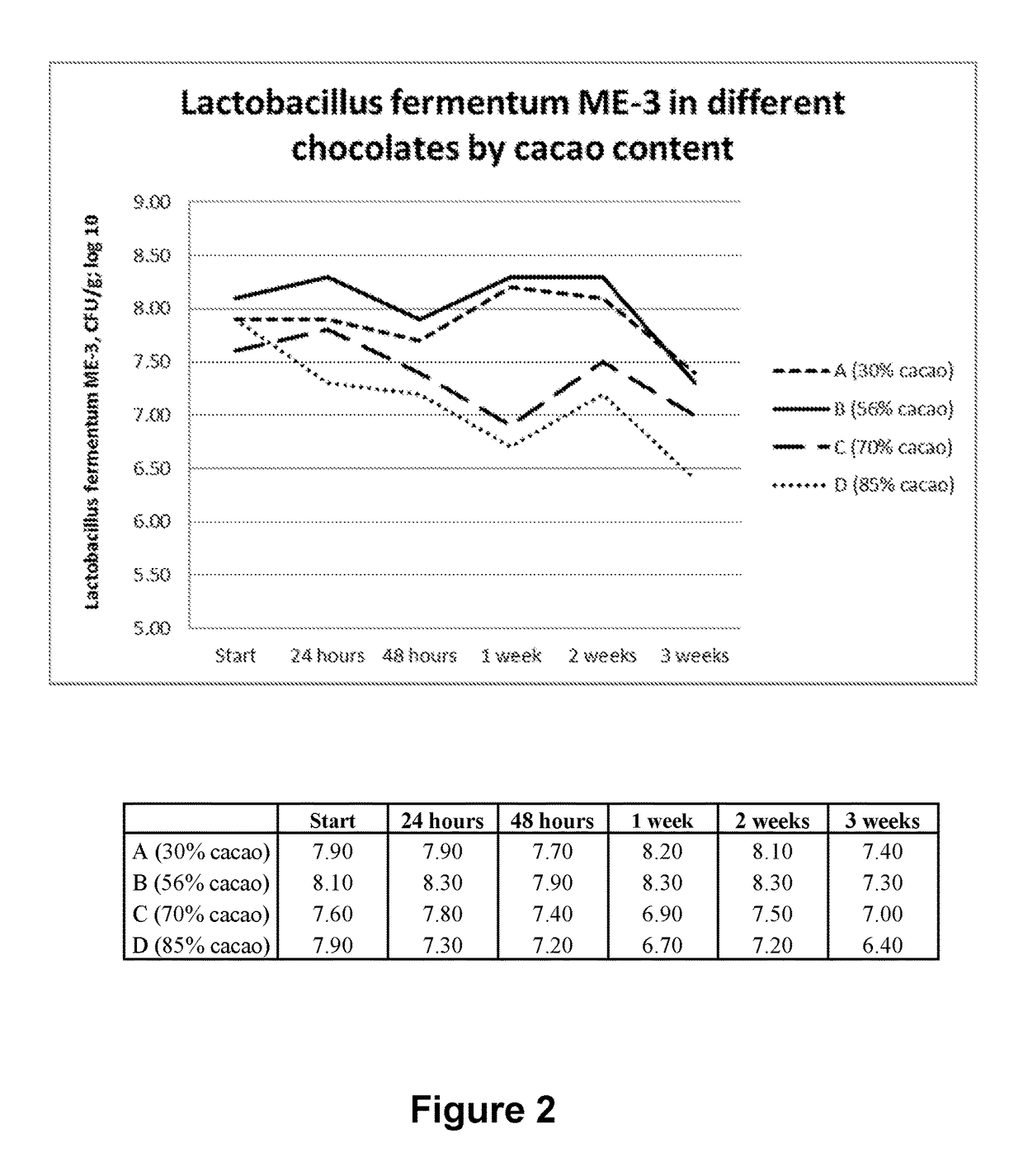Method of treatment using Lactobacillus fermentum ME-3
a technology of lactobacillus and me3 is applied in the field of treatment using i>lactobacillus fermentum /i>me-3, which can solve the problems of studies where the effects of different probiotic bacteria have been compared, and achieve the effects of stimulating the production of the anti-inflammatory and anti-diabetic peptide adiponectin, alleviating symptoms, and high sensitivity c-reactiv
- Summary
- Abstract
- Description
- Claims
- Application Information
AI Technical Summary
Benefits of technology
Problems solved by technology
Method used
Image
Examples
example 1
[0082]Effect of probiotic Lactobacillus fermentum ME-3 on low-grade inflammation markers hsCRP, HBA1c, IL-6, adiponectin and non-specific glycation markers was monitored.
[0083]Twenty three clinically healthy volunteers (16 females, 7 males, age 40-65 years) were recruited into a clinical open-label study. Exclusion criteria were as follows: an ongoing acute infection; diabetes; history of food allergy or gastrointestinal disease; use of any antimicrobial agent within the preceding month or use of any regular concomitant medication including non-steroidal anti-inflammatory drugs, statins or hormonal contraception; pregnancy or breastfeeding; alcohol abuse; use of drugs; special diets; smoking. During the intervention, and for two weeks beforehand, participants were asked to avoid vitamin or mineral supplementation, changes in accustomed diet habits and everyday physical activity, and use of probiotic-based foods or other kefirs / yogurts. Unfortunately, because of personal reasons, 4 p...
example 2
[0097]21 patients (80.4±9.9 years, 9 men / 12 women) who had 8-22 (12±6.6) days earlier brain stroke. The subjects of randomized, double-blind clinical study were randomly distributed into 2 groups and were assigned to consume twice a day either 3 capsules (per capsule 109 CFU) of freeze dried Lf ME-3 (LfME-3 group, 10 subjects or 3 capsules (containing 250 mg saccharose and microcellulose, control group, 11 subjects) for 3 weeks. The functional ability (Functional Independence Measure—FIM and Scandinavian Stroke Scale—SSS) and clinical indices of stroke patients were assessed pre- and after the 3 week treatment period. The use of usCRP for elevation of conditions thought to be associated with inflammation, in otherwise healthy individuals.
[0098]According to international reference values the accepted cut-off value for CRP is 20 mg / 1 (Van den Bruel A et al. (2011) BMJ. 2011 Jun. 8; 342). In the Lactobacillus fermentum ME-3 group 45% of stroke patients were above cut-off value for CRP ...
example 3
[0099]The Inventors also carried out a randomized, double blind placebo controlled clinical trial (The Ethics Review Committee (ERC) on Human Research of the University of Tartu approved the study protocol (ref: 210 / T-3) to compare a placebo kefir group without ME-3 (more than 55 people) and an ME-3 kefir group (more than 55 people) (article in preparation). Data from 8 weeks versus data from 4 weeks showed that consumption of Lactobacillus fermentum ME-3 enriched kefir, not placebo kefiir, significantly decreased the level of HbA1c (p=0.015). In addition, at 8 weeks only ME-3 kefir decreased significantly the level of IL-6 (pLactobacillus fermentum ME-3 help to prevent risk, alleviate the symptoms and treat metabolic syndrome related conditions (prediabetes, diabetes, cardiovascular disease). Data from 8 weeks versus data from 4 weeks showed that consumption of Lactobacillus fermentum ME-3 enriched kefir, not the placebo kefir, significantly decreased the level of HbA1c (p=0.015).
PUM
 Login to View More
Login to View More Abstract
Description
Claims
Application Information
 Login to View More
Login to View More - R&D
- Intellectual Property
- Life Sciences
- Materials
- Tech Scout
- Unparalleled Data Quality
- Higher Quality Content
- 60% Fewer Hallucinations
Browse by: Latest US Patents, China's latest patents, Technical Efficacy Thesaurus, Application Domain, Technology Topic, Popular Technical Reports.
© 2025 PatSnap. All rights reserved.Legal|Privacy policy|Modern Slavery Act Transparency Statement|Sitemap|About US| Contact US: help@patsnap.com


